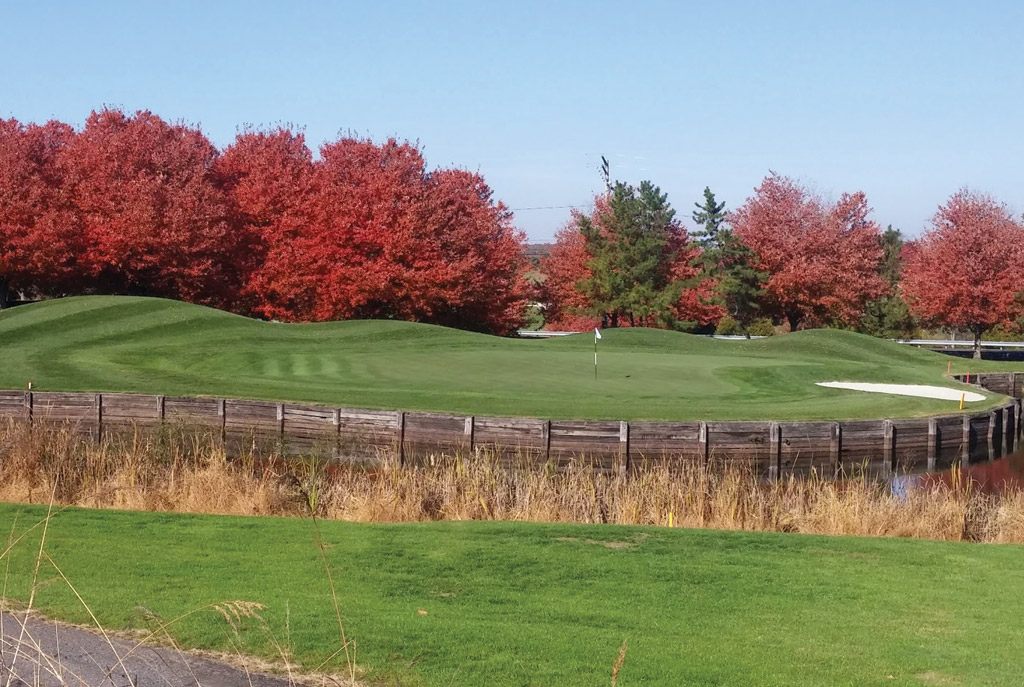[…]and supporting services such as nutrient cycling, water cycling, and provisioning of habitat. Key Components of Maryland’s Golf Course BMPs BMPs are methods or techniques found to be the most effective and practical means of achieving an objective, such as preventing water quality impacts or reducing pesticide usage. Because of the efforts aimed at protecting water quality, especially in the portions of Maryland located within the Chesapeake Bay watershed, the majority of BMPs in this document relate to water quality. In addition, an emerging concern related to protecting pollinators is also addressed, including identifying specific practices to protect pollinator health as […]
[…]to the Maryland Best Management Practices blog page. On this page we will be providing news, information, and insights on the use of Best Management Practices to protect natural resources. To be notified of new postings, please sign up using the form at […]
[…]normally require little to no irrigation. The Maryland Native Plant Society provides information on native plants in the state and the National Park Service offers information on native plants for Maryland. A list of drought-tolerant plants for landscape beds is available in Xeriscaping and Conserving Water in the Landscape. 2001. University of Maryland Extension. Superintendents can plan ahead by developing a water conservation plan to achieve a 10% reduction in water use before mandatory water restrictions are enacted. Communication should be maintained with water managers, golf club members, and the public to explain your water conservation efforts as a proactive […]
[…]in photosynthesis and is a cofactor for a variety of oxidative enzymes. Zinc: Zn is a structural component of enzymes and is required for protein synthesis. Carbohydrate metabolism is affected by Zn. Molybdenum: Mo is primarily related to nitrogen metabolism and is involved in the structural and catalytical functions of enzymes. Chlorine: Cl is required for the oxygen-evolving reactions of photosynthesis and also appears to be required for cell division in both leaves and shoots. Next: Soil […]
[…]includes the proper storage, handling, and disposal of chemicals, washwater, and wastewater. For example, an equipment-washing facility can be a source of both surface water and groundwater pollution if the washwater generated is not properly handled. In particular, washwater from pesticide application equipment must be managed properly, since it contains pesticide residues. If not contaminated, wastewater can be reused or discharged to a permitted stormwater treatment system. Facilities related to the storage and handling of pesticides, fertilizers, and other chemicals, especially in their concentrated form, pose the highest potential risk to water sources if accidentally released in quantity. Therefore, anyone […]
[…]The use of soil moisture probes, computer models, and tensiometers, as well as visual inspections for symptoms such as wilting turf, may supplement these measurements. Computerized displays are available to help visualize the system. Predictive models based on weather station data and soil types are also available. These are relatively accurate and applicable, especially as long-term predictors of annual turf water requirements. Weather data such as rainfall, air and soil temperature, relative humidity, and wind speed are incorporated into certain model formulas, and soil moisture content is estimated. Models, however, are only as effective as the amount of data collected […]
[…]all empty pesticide containers before taking other container disposal steps. For more information on proper pesticide container disposal procedures in Maryland, see Pesticide Information Leaflet No. 13: Disposal of Pesticide Containers. 2012. University of Maryland. After following proper procedures (such as pressure rinsing, triple rinsing, puncturing, etc.), pesticide containers be either recycled through an approved program or disposed of by depositing them in a licensed sanitary landfill. The MDA offers a pesticide container recycling program (see MDA’s 2017 program brochure). Ways to reduce the amount of waste requiring handling include identifying and implementing waste-reduction practices and purchasing in bulk packaging […]
[…]tract. Pesticide labels list legal requirements for minimum PPE. SDS also provide information on appropriate PPE to wear while handling the product as formulated. To avoid contamination, PPE should not be stored in a pesticide storage area. For more information, see Chapter 6 “Personal Protective Equipment” of the Maryland Pesticide Applicator Core Manual. Best Management Practices Provide adequate PPE for all employees who work with pesticides (including equipment technicians who service pesticide application equipment). Ensure that PPE is sized appropriately for each person using it. Make certain that PPE is appropriate for the chemicals used as listed on the pesticide […]
[…]nesting boxes or hollow bamboo sticks can be provided for solitary nesting species. More information on planting for pollinator species in Maryland and beneficial plants can be found in the University of Maryland Extension’s Plants that Attract Pollinators and Natural Enemies. 2015. University of Maryland. Making Room for Native Pollinators is a USGA publication that provides detailed information on creating foraging habitat, bee nesting habitat and man-made nest sites specifically on golf courses, as well as the basics of pollinator biology useful for pesticide applicators. Best Management Practices When renovating out-of-play areas, plant a diversity of flowering pollinator-friendly plants. Leave nesting […]
[…]day are required to report monthly withdrawals to MDE. MDE maintains a permit guide with information on water use appropriation and permits. MDE maintains the state’s official drought status. Maryland uses a four-stage approach to drought status. Superintendents should be aware when Stage 3 (Warning) and Stage 4 (Emergency) drought conditions are declared. At Stage 3, golf course compliance with water use restrictions is voluntary. At Stage 4, restrictions are mandatory for non-essential water uses, including prohibitions on irrigation and watering on golf courses, with the following exceptions: Watering of tees and greens between the hours of 8 p.m. and […]

